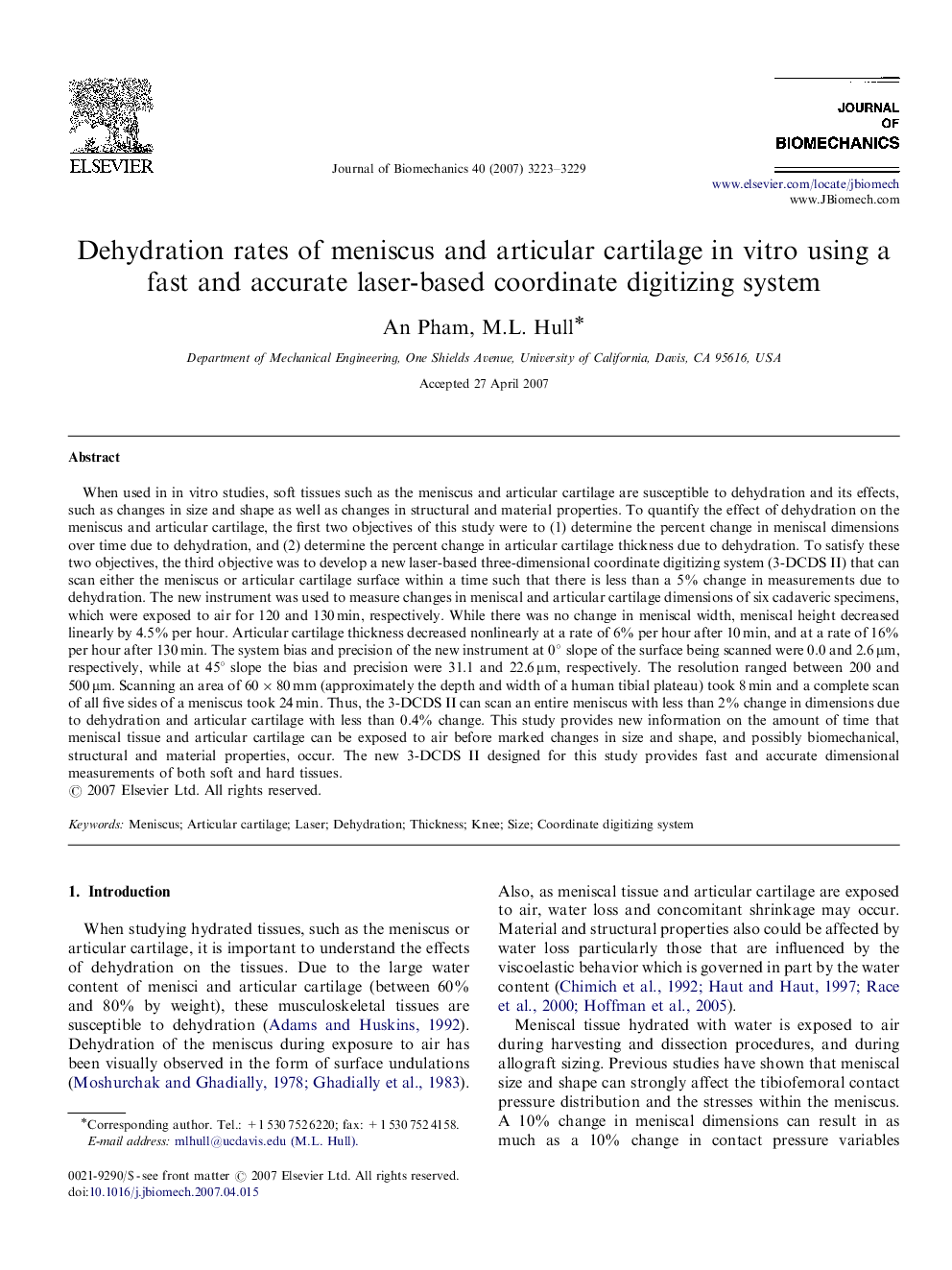| Article ID | Journal | Published Year | Pages | File Type |
|---|---|---|---|---|
| 875311 | Journal of Biomechanics | 2007 | 7 Pages |
When used in in vitro studies, soft tissues such as the meniscus and articular cartilage are susceptible to dehydration and its effects, such as changes in size and shape as well as changes in structural and material properties. To quantify the effect of dehydration on the meniscus and articular cartilage, the first two objectives of this study were to (1) determine the percent change in meniscal dimensions over time due to dehydration, and (2) determine the percent change in articular cartilage thickness due to dehydration. To satisfy these two objectives, the third objective was to develop a new laser-based three-dimensional coordinate digitizing system (3-DCDS II) that can scan either the meniscus or articular cartilage surface within a time such that there is less than a 5% change in measurements due to dehydration. The new instrument was used to measure changes in meniscal and articular cartilage dimensions of six cadaveric specimens, which were exposed to air for 120 and 130 min, respectively. While there was no change in meniscal width, meniscal height decreased linearly by 4.5% per hour. Articular cartilage thickness decreased nonlinearly at a rate of 6% per hour after 10 min, and at a rate of 16% per hour after 130 min. The system bias and precision of the new instrument at 0° slope of the surface being scanned were 0.0 and 2.6μm, respectively, while at 45° slope the bias and precision were 31.1 and 22.6μm, respectively. The resolution ranged between 200 and 500μm. Scanning an area of 60×80mm (approximately the depth and width of a human tibial plateau) took 8 min and a complete scan of all five sides of a meniscus took 24 min. Thus, the 3-DCDS II can scan an entire meniscus with less than 2% change in dimensions due to dehydration and articular cartilage with less than 0.4% change. This study provides new information on the amount of time that meniscal tissue and articular cartilage can be exposed to air before marked changes in size and shape, and possibly biomechanical, structural and material properties, occur. The new 3-DCDS II designed for this study provides fast and accurate dimensional measurements of both soft and hard tissues.
